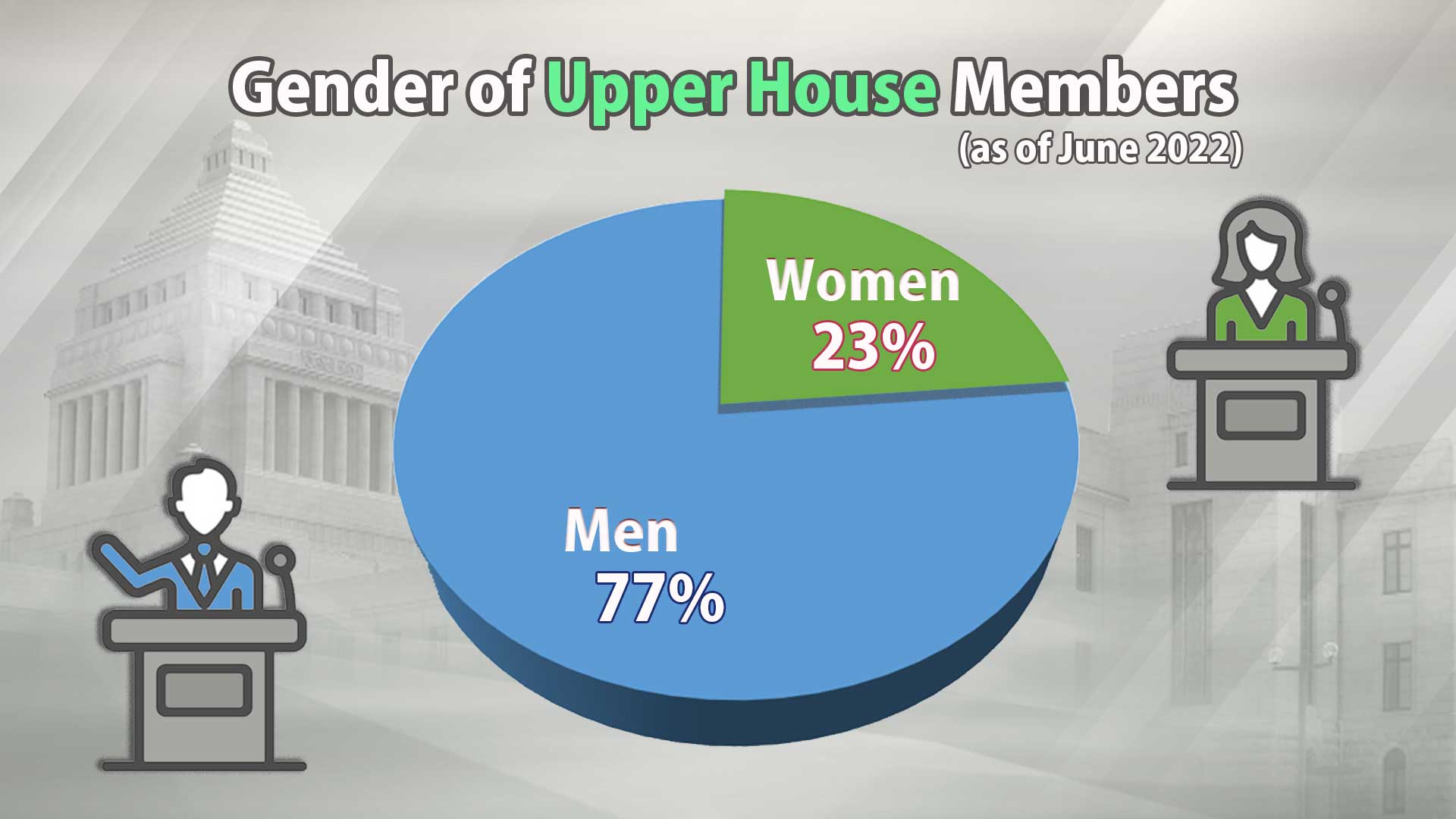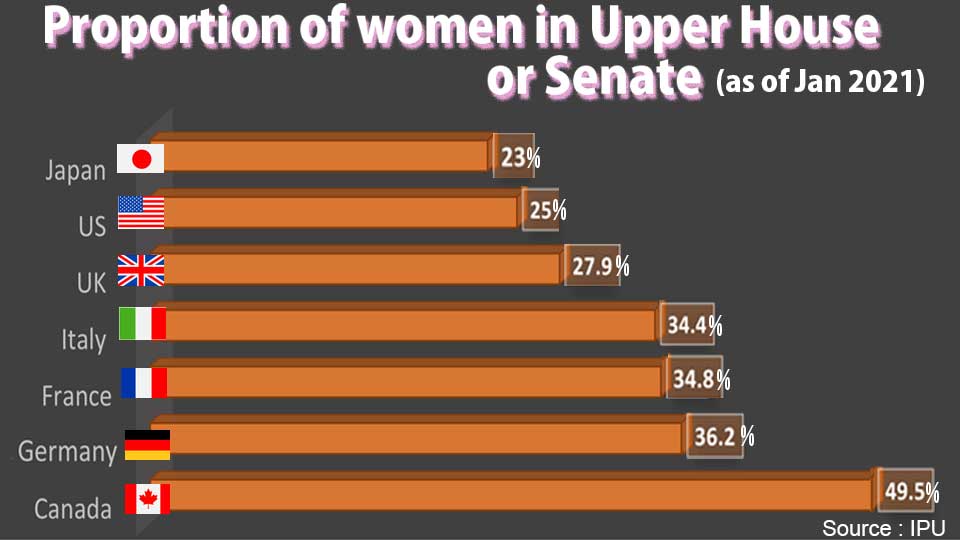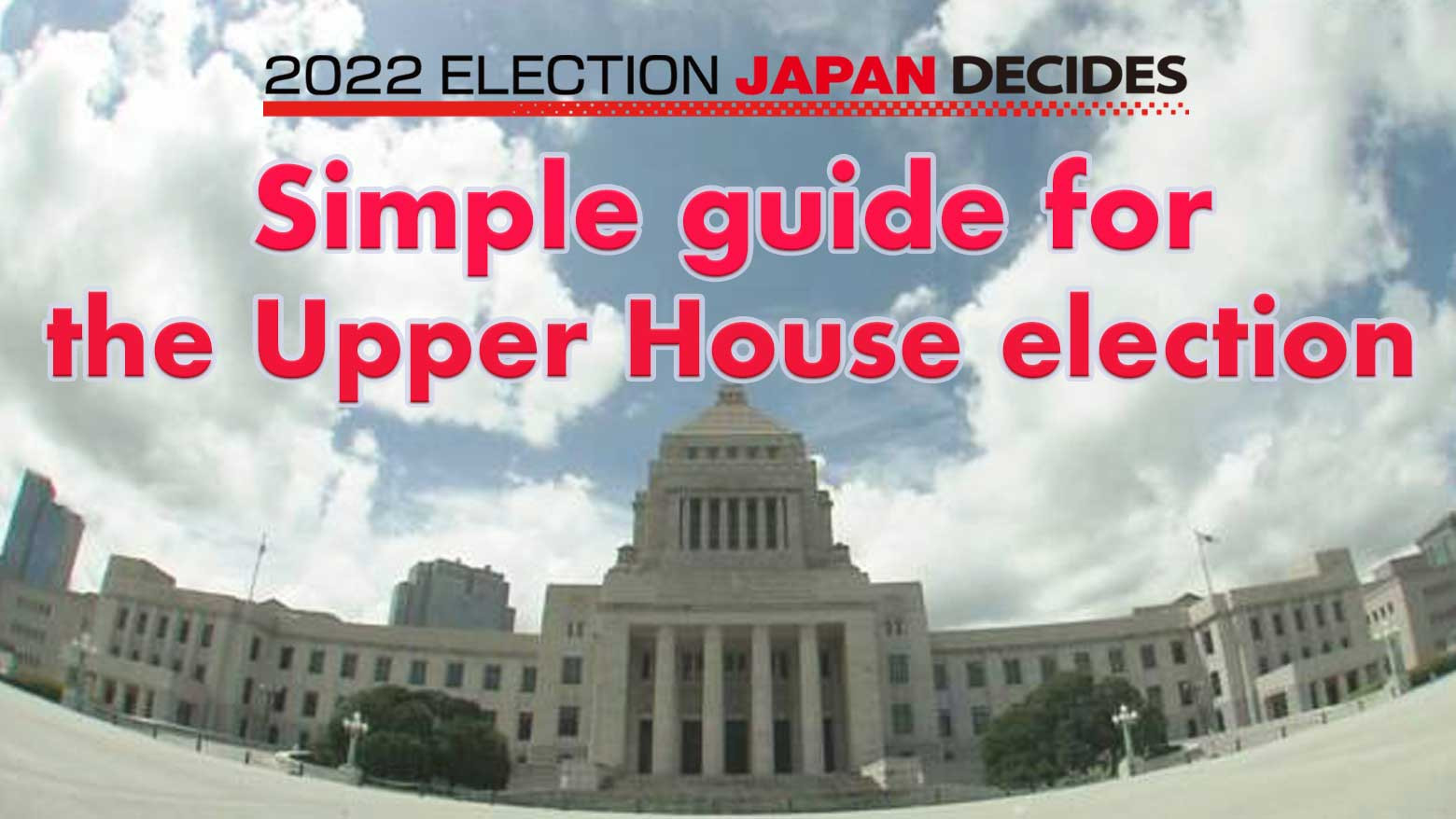1) The Upper House and the Lower House
Japan's Diet is made up of two chambers: the Upper House, or House of Councillors, and the Lower House, or the House of Representatives. In principle, legislation must be approved by both houses to become law, but the Lower House has the ability to override the Upper House.
Upper House members serve six-year terms aimed at allowing them to tackle long-term political issues.

2) 125 seats up for grabs
The Upper House will have a total of 248 seats after the election. Three seats have been added since the 2019 election.
Elections for half the total members (124) take place every three years. This time, there is also one vacant seat to fill from the other half, so a total of 125 seats are being contested.
Of that number, 75 will be elected from constituencies across Japan, and 50 via proportional representation.

3) Opinion polls
Prime Minister Kishida Fumio took office in October 2021. He called a general election for the Lower House that same month, and his Liberal Democratic Party and coalition partner Komeito won a comfortable majority.
The Upper House vote is viewed as a litmus test for Kishida's government.

4) Women's representation
As of June this year, 23 percent of Japan's Upper House members were women. The figure is unchanged from 2021, when the Cabinet Office says the country ranked 94th in the world among others with similar parliamentary systems or Senates.
It's the lowest percentage among Group of Seven nations. In Canada, more than 49 percent of Senate members were women in 2021. Germany's upper house stood at 36 percent, and France's at 34 percent.
There are a record 181 women running for a seat this time, accounting for 33 percent of all candidates.




